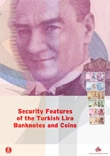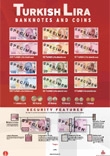
Local Currency in Marmaris
local currency in Marmaris, Turkey, is the Turkish Lira (TRY). The Turkish Lira is the official currency of Turkey and is used throughout the country, including in popular tourist destinations like Marmaris.
It’s important to note that currency exchange rates can fluctuate, so it’s a good idea to check the current exchange rate before your trip to Marmaris if you plan to exchange money or use local currency. Additionally, when you’re in Marmaris, you can exchange currency at local banks, exchange offices, or use ATMs to withdraw Turkish Lira using your debit or credit card. Many businesses in Marmaris also accept major credit and debit cards for transactions, especially in tourist areas.
Keep in mind that while using credit or debit cards is convenient, it’s a good idea to carry some cash for small purchases and places that may not accept cards.



